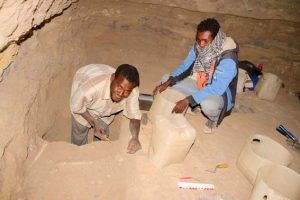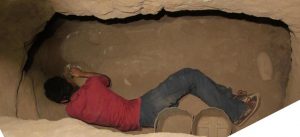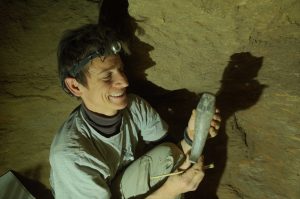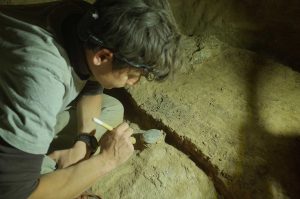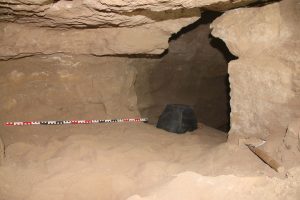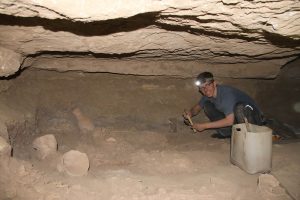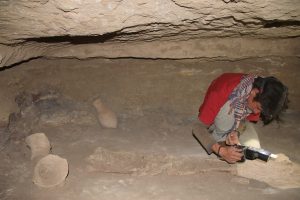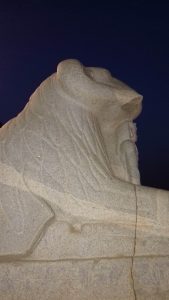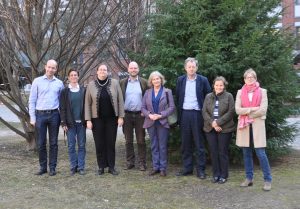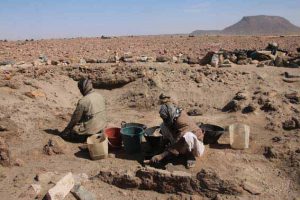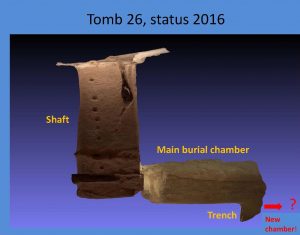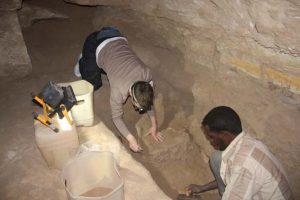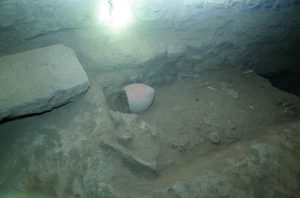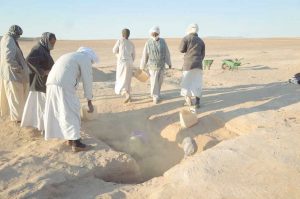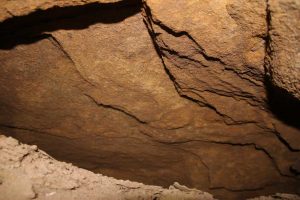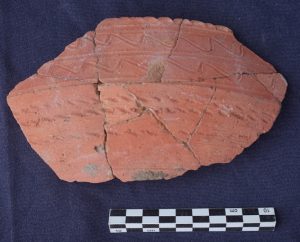Starting with post-excavation analyses and organizing all data collected during our weeks on Sai Island, the many highlights and working steps in Tomb 26 can be nicely illustrated by a selection of photos:
Tag Archives: Sai Island
Khartoum – Munich – Vienna
One week ago, I was still enjoying my last days in Sudan, recovering from the nimiti-flies in Khartoum.
Back in Munich, things have been very busy – I am very proud that one of our student assistants, Daniela, just passed her MA defensio with distinction – with a work on New Kingdom cooking pots, highlighting material from Sai and Elephantine. Well done indeed!
Another very pleasant event was a meeting organized by my colleague Philipp Stockhammer – bringing ERC grantees within the field of archaeology from several countries together, celebrating 10 years of ERC and thinking about future collaborations.
Now back in Vienna, we just had a very fruitful meeting today, dedicated to my FWF START project, especially the strontium isotope analyses. A beautiful spring day is the perfect setting for this reunion!
With all the fresh data from our 2017 season, organizing the next working steps and the diverse analyses will keep us busy for quite some time…
Update from week 2, Sai Island
Just a quick update from the last few days of fieldwork: Work was successfully re-started at SAV1 West, concentrating on the mud brick structures to the east of the town enclosure. The amount of pottery unearthed is very substantial – 46 baskets of pottery in 3 days! The majority is mid-18th Dynasty in date, confirming nicely our assessment from last season.
In addition, Tomb 26 still keeps us very busy – what looked like dislocated human remains in the trench in front of the new chamber, actually turned out to be slightly twisted and moved, but almost complete individuals. The state of preservation of the bones is – like last year – very bad and cleaning is extremely time-consuming. However, with a minimum of three new “inhabitants” of Tomb 26, the trench along the northern wall yielded much more than we originally expected! One of the skeletons is just lying directly below the entrance to the chamber which is filled with deposit until the ceiling…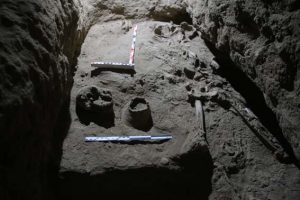
Summary of week 1, fieldwork season 2017
Amazing how time flies by during a fieldwork season – we arrived at Sai one week ago, finished our first week with workmen yesterday. On Wednesday, Cajetan Geiger and Andrea Stadlmayr joined us – Cajetan will be supervising fieldwork starting next week at sector SAV1 West (together with Franziska Lehmann) and Andrea, one of the project’s physical anthropologists, is of course working with me in Tomb 26.
The results of the first week are very satisfying: on arrival, we found Tomb 26 undisturbed, successfully cleaned our re-filling of its shaft and made a first check of the lower, still unexcavated burial chamber. The entrance of this lower chamber was still largely concealed by the trench along the north wall which we did not excavate on its western side in 2016.
Starting with cleaning the northwestern corner of the main burial chamber, we soon were able to trace the outline of this trench, locating its western edge. Excavating the trench was quite a challenge, as many dislocated human bones had to be cleaned and properly documented.
Like last year, we are using SFM documentation for every single surface in order to reconstruct the formation processes within the tomb in detail. Loads of thanks go here to Martin Fera – thanks to his perfect setup in the last seasons and his detailed introduction, the documentation works very well – my photos are not yet as perfect as Martin’s, but it definitly works ;-).
The layers within the trench are mostly flood deposits as well as some collapse from the northern wall and debris. Quite substantial amounts of ceramics were found, all of which are New Kingdom in date.
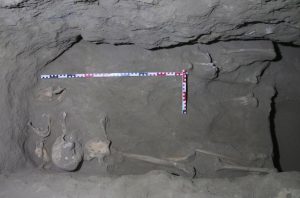
Dislocated remains of burials in the trench; note the upper edge of the chamber entrance on the north wall.
Yesterday, we were able to trace the western upper edge of the entrance into the lower chamber! This entrance has quite impressive dimensions being extremly wide and we are much looking forward to clean it further and start excavating the chamber itself in the next days, insha’allah.
Work in progress in Tomb 26
The last days were quite busy with ongoing work in Tomb 26. The first task after checking out the new chamber on the lower level, was to clean the northwestern corner of the main chamber. Dense flood levels were covering the floor of the chamber in this area, holding almost no finds, but covering some bone fragments. On an upper level, already excavated in 2016, an almost intact individuum has been found.
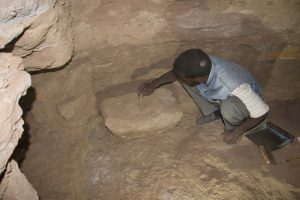 One of the particularly interesting features of Tomb 26 is that the southern and western walls were once lined with worked stones and plastered – a collapsed block from this casing was located in the northwestern corner. We will take it out later in this season, hoping to replace it virtually back on the wall by checking the negative voids in the nearby western wall with the block’s dimensions.
One of the particularly interesting features of Tomb 26 is that the southern and western walls were once lined with worked stones and plastered – a collapsed block from this casing was located in the northwestern corner. We will take it out later in this season, hoping to replace it virtually back on the wall by checking the negative voids in the nearby western wall with the block’s dimensions.
The second task, especially in order to allow excavation of the new chamber located below the northern wall, was to trace the western part of the trench along the north wall. This trench was only excavated on its eastern part in 2016 – clearly showing that it once gave access to the lower chamber, but was completely filled with flood levels.
We successfully found the trench on the western side and are currently busy excavating it layer to layer. Like in 2016, a substantial amount of bones and pottery vessels were found – hopefully the ceramics will allow us to date the filling of this access to Tomb 26’s lower chamber.
Happy New Year from Sai
Timing turned out just perfect – leaving Khartoum on schedule, we started yesterday our final field season on Sai Island. The first task was to re-open Tomb 26 – removing the filling of its more than 5 m deep shaft was a bit dusty, but worked out very well thanks to our enthusiastic gang of workmen supervised by Hassan Dawd.
And even more perfect: New Year started with re-opening the main chamber of Tomb 26 earlier today. All is in perfect condition, almost no collapse of the ceiling occurred.
We will concentrate on the northwestern corner of the chamber which was not yet completely excavated – and we are all very excited about the new chamber found at a lower level along the north wall in the very last days of the 2016 season. Clearing this chamber of still unknown dimensions will keep us busy this season. I’ve cleared some of its entrance area today, but it is almost completely filled with flood deposits – making a proper assessment what to expect from this new chamber very difficult. However, the six pottery sherds which came today from the entrance area are all New Kingdom in date – interestingly, one seems to be of 19th Dynasty date.
Will we maybe be able to re-locate Hornakht’s original burial after all? Just follow our blog for the current field season and our findings in Tomb 26! Although 2017 has just started, the new year is definitely full of exciting prospects :-)!
Off to Sudan
Every year again… The holidays are just over and the first team members are getting ready to start the next season on Sai Island, Sudan. Meg, Franziska and me are flying to Khartoum tonight, hoping to reach the island later this week.
Not everything is like every year though – it’s going to be our final closing season on Sai Island, I am very much looking forward to finishing excavations in SAV1 West, SAV1 East and of course in Tomb 26.
It will be for sure exciting and splendid sun-settings like every year will make life with the nimiti-flies endurable.
 We will of course share nimiti- and nimiti-free-moments with you and will keep you posted about AcrossBorders final Sai Island season 2017!
We will of course share nimiti- and nimiti-free-moments with you and will keep you posted about AcrossBorders final Sai Island season 2017!
Tomb 26 on Sai and its challenges
Perfect timing – just before the holidays, Sokar volume 33 is now available – including a short article about excavations and recent finds in Tomb 26. I highlighted the specific challenges we encountered regarding
- the documentation and excavation of the human remains
- the stratigraphy
- the drawing of skeletons and features
- geodetic survey in the chamber
- potential of finds and ceramics.
The paper is also the perfect outlook for the upcoming 2017 season on Sai Island – work in Tomb 26 will start already next week insha’allah. Of course we’ll keep you udpated! Julia Budka, Neues zum Pyramidenfriedhof auf Sai, Sokar 33, 2016, 60–67.
Julia Budka, Neues zum Pyramidenfriedhof auf Sai, Sokar 33, 2016, 60–67.
Report of fieldwork 2016 on Sai Island
Having just returned from Elephantine, it’s time to prepare the final fieldwork season on Sai Island, scheduled for January to March 2017. We will finish work in the two sectors within the town area (SAV1 East and SAV1 West) and in the New Kingdom cemetery SAC5 (Tomb 26).
The very successful 2016 season added important information about general aspects of the evolution of Sai Island in Pharaonic times and here especially during its heyday in Thutmoside times. The 2016 report is now available, promising further findings in 2017!
Pinched rims and incised decoration from the Second Intermediate Period to the New Kingdom
Working currently in the earliest strata of House 55 and especially the foundation levels, a considerable amount of older material came up in the last days (including the small fragment of “gilded ware” from Lower Nubia). Dating these ceramic assemblages is sometimes not easy: Second Intermediate Period style of ceramic production continued well into the 18th Dynasty and often one relies on ware and technique to distinguish between residual pieces and products of the New Kingdom.
That Second Intermediate style was not completely passé by the time of the 18th Dynasty, can be nicely illustrated by a common type of carinated bowls. Of various sizes, both in Marl and Nile clays, these often show wavy lines, sometimes in combination with applied ridges and what Stuart Tyson Smith named “pinched ‘piecrust’ rims” (Smith 2012, 397). This type is commonly associated with the Second Intermediate Period pottery tradition in Egypt; early variants are already attested since the late Middle Kingdom in Egypt and Nubia, but these dishes are more common during the Second Intermediate Period.
As noticed in an earlier post, these carinated bowls – by now they are definitely among my favorite types! – are well attested from both on Elephantine and Sai Island. At both sites, they are known from stratified contexts of the early 18th Dynasty, up to the time of Thutmose III.
Today, Oliver was drawing some of the early examples from the phases of use of House 55 – almost identical to the ones he already made drawings of on Sai, stressing again the strong links between the two 18th Dynasty settlements currently being investigated by AcrossBorders.
Reference:
Smith 2012 = Stuart Tyson Smith, Pottery from Askut and the Nubian forts, in: Robert Schiestl / Anne Seiler (eds.), Handbook of pottery of the Egyptian Middle Kingdom. Volume II: the regional volume, Vienna 2012, 377‒405.

